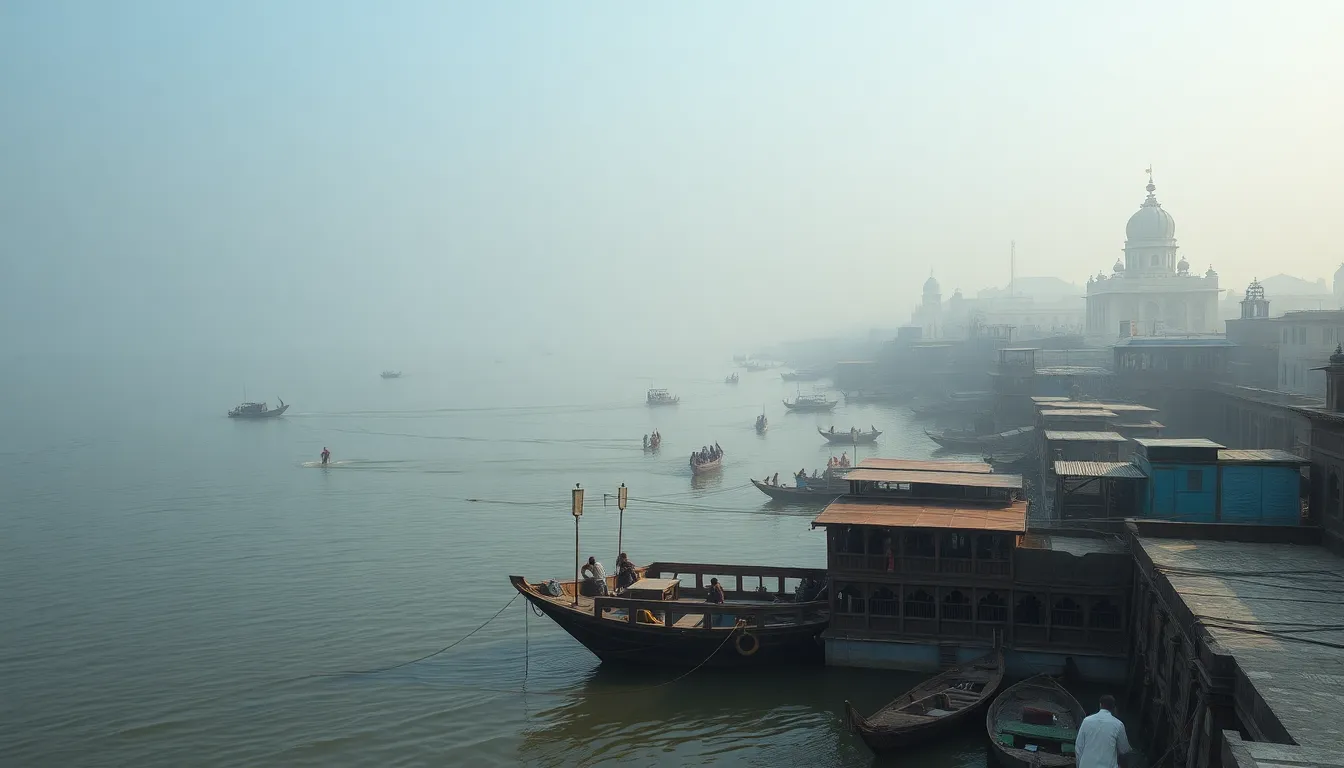Ganges: The Sacred River That Holds the Soul of India
I. Introduction
The Ganges River, known as the Ganga in India, is not just a body of water; it is a lifeline that has nourished the Indian subcontinent for centuries. Spanning over 2,500 kilometers, it is one of the longest rivers in the world and is revered as the holiest river in Hinduism. For millions, the Ganges is a symbol of purity, spirituality, and cultural heritage.
This article aims to explore the multifaceted significance of the Ganges, delving into its historical importance, its role in Hindu mythology, cultural practices, ecological value, and the challenges it faces in the modern world.
II. Historical Significance of the Ganges
The Ganges has been a cradle of ancient civilizations, serving as a vital source of water, transportation, and trade. Here’s a closer look at its historical significance:
- Ancient Civilizations: The river has supported numerous civilizations, including the Indus Valley Civilization, which flourished along its tributaries.
- Historical Texts: The Ganges is frequently mentioned in ancient texts such as the Vedas, Puranas, and epics like the Mahabharata, highlighting its sacred status.
- Settlements and Trade Routes: Over centuries, towns and cities like Varanasi, Haridwar, and Allahabad developed along its banks, becoming crucial centers for trade and commerce.
III. The Ganges in Hindu Mythology
In Hindu mythology, the Ganges has a divine origin, believed to be the incarnation of the goddess Ganga. The river is steeped in symbolism and mythology:
- Origin Stories: According to legends, the Ganges descended from the heavens, facilitated by Lord Shiva, to cleanse the souls of humanity.
- Symbolism: The river represents purity and is seen as a pathway to salvation and spiritual liberation.
- Major Myths: Various tales, including the story of Bhagiratha, who brought the river to Earth to redeem his ancestors, emphasize the river’s sacred nature.
IV. Cultural Practices and Rituals
The Ganges is deeply ingrained in the daily lives and spiritual practices of millions of people:
- Source of Sustenance: Communities along the river rely on it for drinking water, fishing, and agriculture.
- Religious Rituals: The Ganges is the site of numerous rituals, including daily prayers, cremation ceremonies, and festivals like Kumbh Mela, where millions gather to bathe in its waters.
- Pilgrimage Sites: Key pilgrimage destinations such as Varanasi, Haridwar, and Rishikesh attract devotees seeking spiritual purification.
V. Ecological Importance of the Ganges
The Ganges River supports a diverse range of ecosystems and species but faces significant ecological challenges:
- Biodiversity: The Ganges basin is home to unique flora and fauna, including the endangered Ganges river dolphin.
- Environmental Challenges: Pollution from industrial waste, sewage, and plastic has severely impacted the river’s health.
- Conservation Efforts: Initiatives such as the Namami Gange Program aim to clean and protect the river through various ecological restoration projects.
VI. The Ganges and Indian Economy
The Ganges plays a crucial role in the Indian economy, influencing agriculture, tourism, and local livelihoods:
- Agriculture and Irrigation: The river irrigates vast agricultural lands, supporting the livelihoods of millions of farmers.
- Tourism: Cultural and spiritual tourism thrives along the Ganges, attracting visitors from around the globe.
- Economic Challenges: Balancing economic growth with environmental sustainability is a pressing issue for communities along the river.
VII. Modern Challenges Facing the Ganges
Despite its significance, the Ganges faces numerous modern challenges that threaten its purity and the health of its ecosystems:
- Pollution: Industrial discharges and untreated sewage are major contributors to the river’s pollution, impacting both human health and aquatic life.
- Urbanization: Rapid urban development along the riverbanks has led to habitat destruction and increased waste generation.
- Government Policies: Various initiatives have been launched to address these issues, but implementation and public awareness remain critical challenges.
VIII. Spiritual Awakening and Revitalization Efforts
Recognizing the need for preservation, various movements and initiatives have emerged to rejuvenate the Ganges:
- River Rejuvenation Movements: Grassroots efforts aim to restore the river’s health through community engagement and sustainable practices.
- Role of NGOs: Non-governmental organizations play a pivotal role in raising awareness and implementing conservation projects.
- Success Stories: Numerous case studies highlight successful local initiatives, showcasing community-led efforts that have made a difference.
IX. The Ganges in Global Context
The Ganges is not only significant to India but also holds a place in the global context of sacred rivers:
- Comparisons: Similar to the Nile and the Amazon, the Ganges represents the vital connection between culture, spirituality, and nature.
- Global Perceptions: The river symbolizes the struggle between tradition and modernity, drawing international attention to its plight.
- International Cooperation: Collaborative efforts are essential for river conservation, with global partnerships focusing on shared water resources.
X. Conclusion
The Ganges River embodies the spirit of India, serving as a source of life, culture, and spirituality. Its enduring legacy continues to shape the identity of millions. However, as modern challenges threaten its sanctity and health, it is imperative that we take collective action to preserve this sacred river for future generations.
In conclusion, the Ganges stands as a testament to the deep connection between humanity and nature, reminding us of the importance of respecting and nurturing our natural resources.



